SPACE bots are set to explore off-planet caves to set up new homes for humans.
The robo-teams would work together to plunge into lava holes on Mars and the Moon – in search for new habitats for humans.
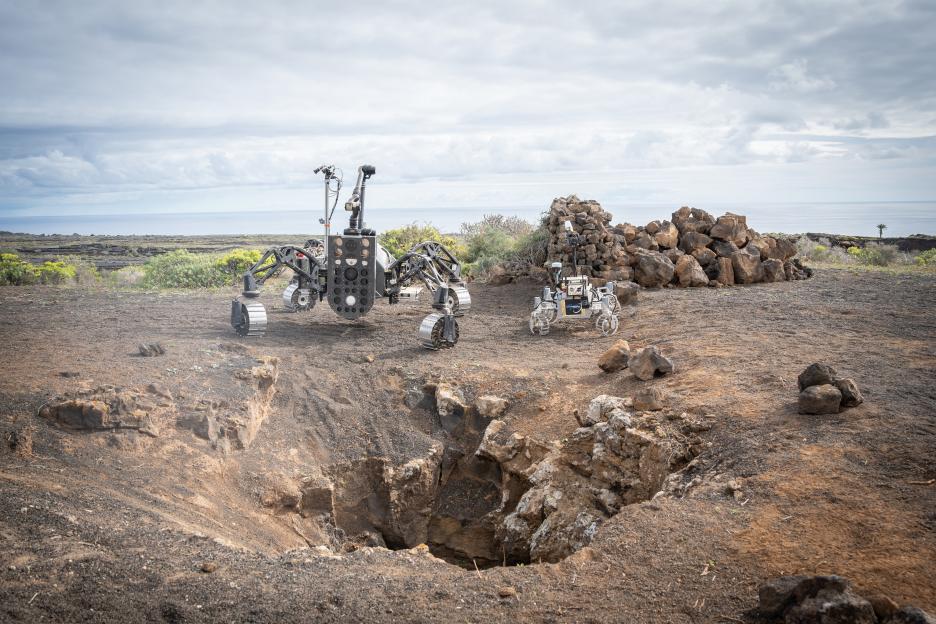 The research team includes scientists from the robotics innovation centre at the German Research Centre for Artificial Intelligence (DFKI)
The research team includes scientists from the robotics innovation centre at the German Research Centre for Artificial Intelligence (DFKI)
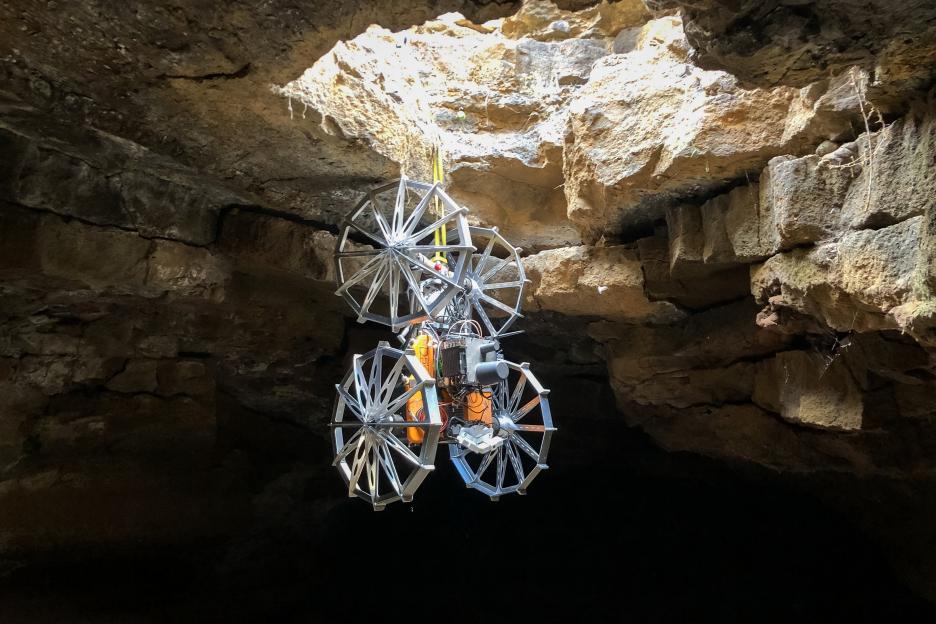 While on their discovery mission, the robo-explorers found a skylight – a hole leading to an underground cave
While on their discovery mission, the robo-explorers found a skylight – a hole leading to an underground cave
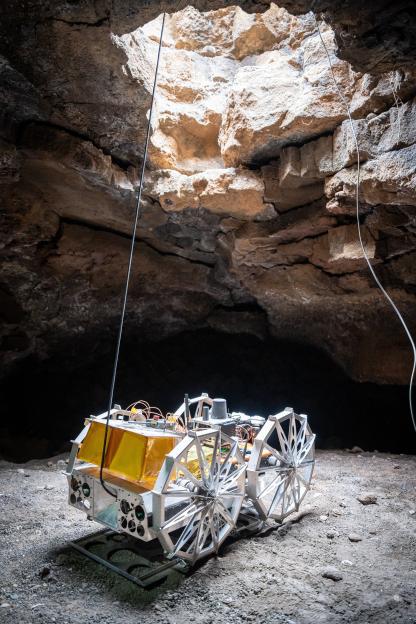 The robot that was lowered into the cave was able to explore the difficult-to-enter area, and successfully generated a 3D model of the cave
The robot that was lowered into the cave was able to explore the difficult-to-enter area, and successfully generated a 3D model of the cave
Research was recently carried out by a team of European academics who outlined the next-level mission in the journal Science Robotics.
Their report shows tests carried out on the volcanic, Brit holiday Island of Lanzarote – chosen due to its environmental similarities with the Moon and Mars.
The research team includes scientists from the robotics innovation centre at the German Research Centre for Artificial Intelligence (DFKI)
DFKI said: “Lava caves on planetary bodies near Earth are promising sites for future base camps, offering natural protection from radiation and meteorite impacts.
“Yet their exploration remains difficult due to harsh conditions and restricted access.”
Three different robot types worked together on their own to rapidly explore and map out the extreme Lanzarote environment including vast lava fields and numerous craters.
While on their discovery mission, the robo-explorers found a skylight – a hole leading to an underground cave.
The AI-gadgets took part in a four-step mission to map together the area around the hole, drop a sensor into the cave to collect data, descend a planetary surface exploration device and have it explore the cave independently to create a 3D map.
The robot that was lowered into the cave was able to explore the difficult-to-enter area, and successfully generated a 3D model of the cave.
Pulling off the application of such technologies in alien landscapes is a key breakthrough in the world of science and technology .
DFKI said: “The results not only confirm the technical feasibility of the concept but also demonstrate the potential of collaborative robotic systems for use in future Moon or Mars missions.
“The study thus provides valuable impetus for the further development of autonomous robotic solutions in the context of planetary exploration.”
The major milestone comes after research from 2024 which suggested future humans living on Mars will undergo drastic physical changes and may even develop into a new sub-species, an expert has told The Sun.
Kyle Zagrodzky, founder of OsteoStrong, a company that specialises in bone health , explained that an unforgiving Martian environment could push humans to evolve into haunting versions of their “Earthling cousins”.
At first, Mars-bound astronauts will feel pretty good, according to Zagrodzky, as the lower level of gravity eases the weight on their bones and joints.
“New comers would have a massive physical advantage in the short run,” he said, before grimly stating: “Until their bones and muscles are down regulated.”
Living in Martian gravity – about 38% of Earth’s gravity – over extended periods is expected to have significant effects on the human body.
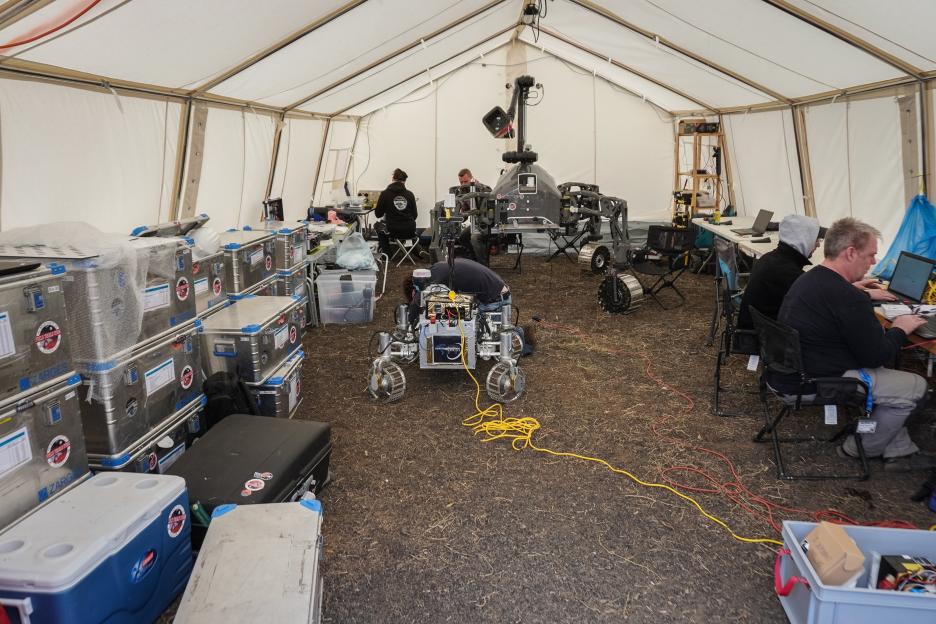 Pulling off the application of such technologies in alien landscapes is a key breakthrough in the world of science and technology
Pulling off the application of such technologies in alien landscapes is a key breakthrough in the world of science and technology
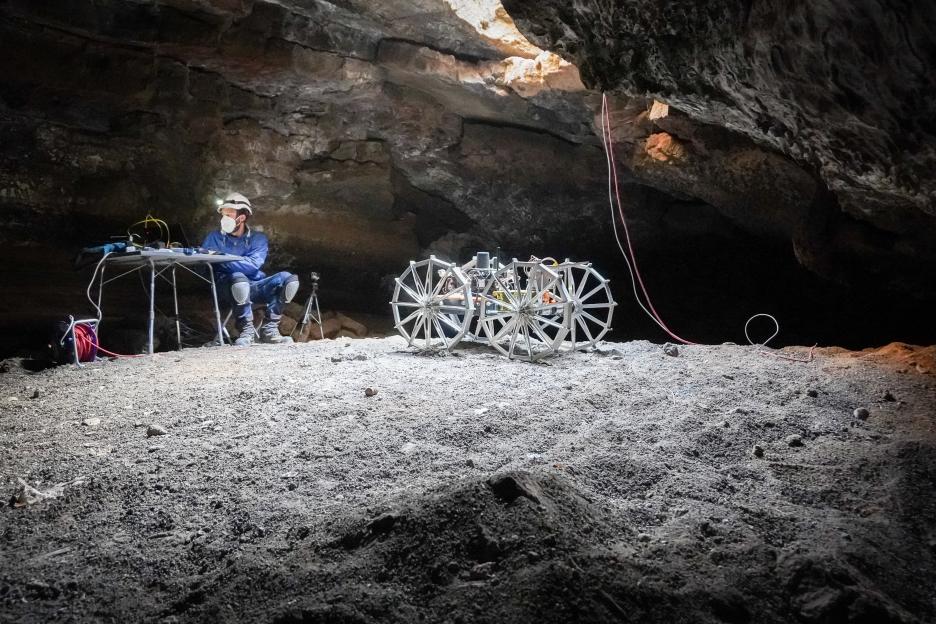 The major milestone comes after research from 2024 which suggested future humans living on Mars will undergo drastic physical changes and may even develop into a new sub-species.
The major milestone comes after research from 2024 which suggested future humans living on Mars will undergo drastic physical changes and may even develop into a new sub-species.
Optimistic estimates from a 2020 Stanford study found that astronauts on a three year mission to Mars and back would lose a third of their bone density.
Around half of them could go on to develop osteoporosis.
“For new adult visitors, spine elongation would probably the first noticeable change,” Zagrodzky continued.
“Other than a change in the distribution of fat, which might look more and more strange over time, we probably wouldn’t see significant outward physical changes in adults going to visit Mars for short periods of time.”
The first crewed Mars mission has been proposed for the 2030s – with Elon Musk ‘s SpaceX aiming to send humans to the Red Planet as early as 2029.
But Musk hopes his crew will have built a self-sustaining colony by 2050.
Mars has dust storms, high levels of radiation and less gravity than Earth.
In order to live there, humans would have to completely change their ways of life although researchers claim streaming Netflix won’t be an issue.








